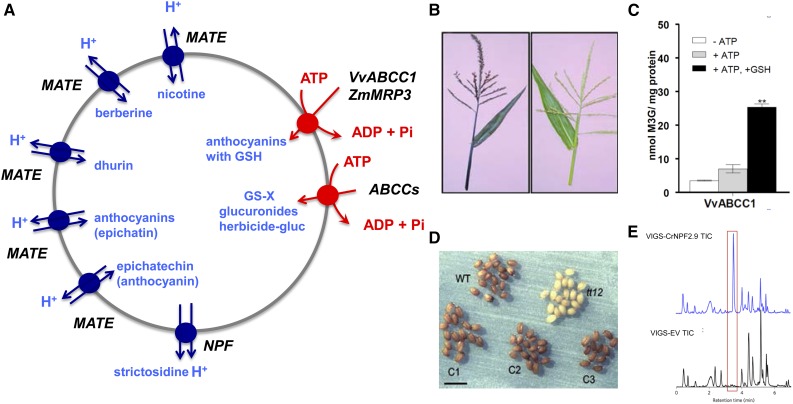Figure 2.
Vacuolar transport of secondary products and xenobiotics. A, Vacuolar pumps (red) and transporters (blue) known to be implicated in delivering or releasing secondary plant products and xenobiotics. B, Phenotypes of a wild-type (left) and a mutant (right) maize in the putative anthocyanin transporter ZmMRP3 (Goodman et al., 2004). C, Transport of anthocyanins requires glutathione (Francisco et al., 2013). D, Color of wild-type (WT), tt12 mutant, corresponding to a mutation in a MATE transporter, and complemented Arabidopsis seeds (Debeaujon et al., 2001). E, Silencing of the vacuolar NPF in Catharathus roseus plants leads to a high accumulation of strictosidine (peak framed in red; Payne et al., 2017).

